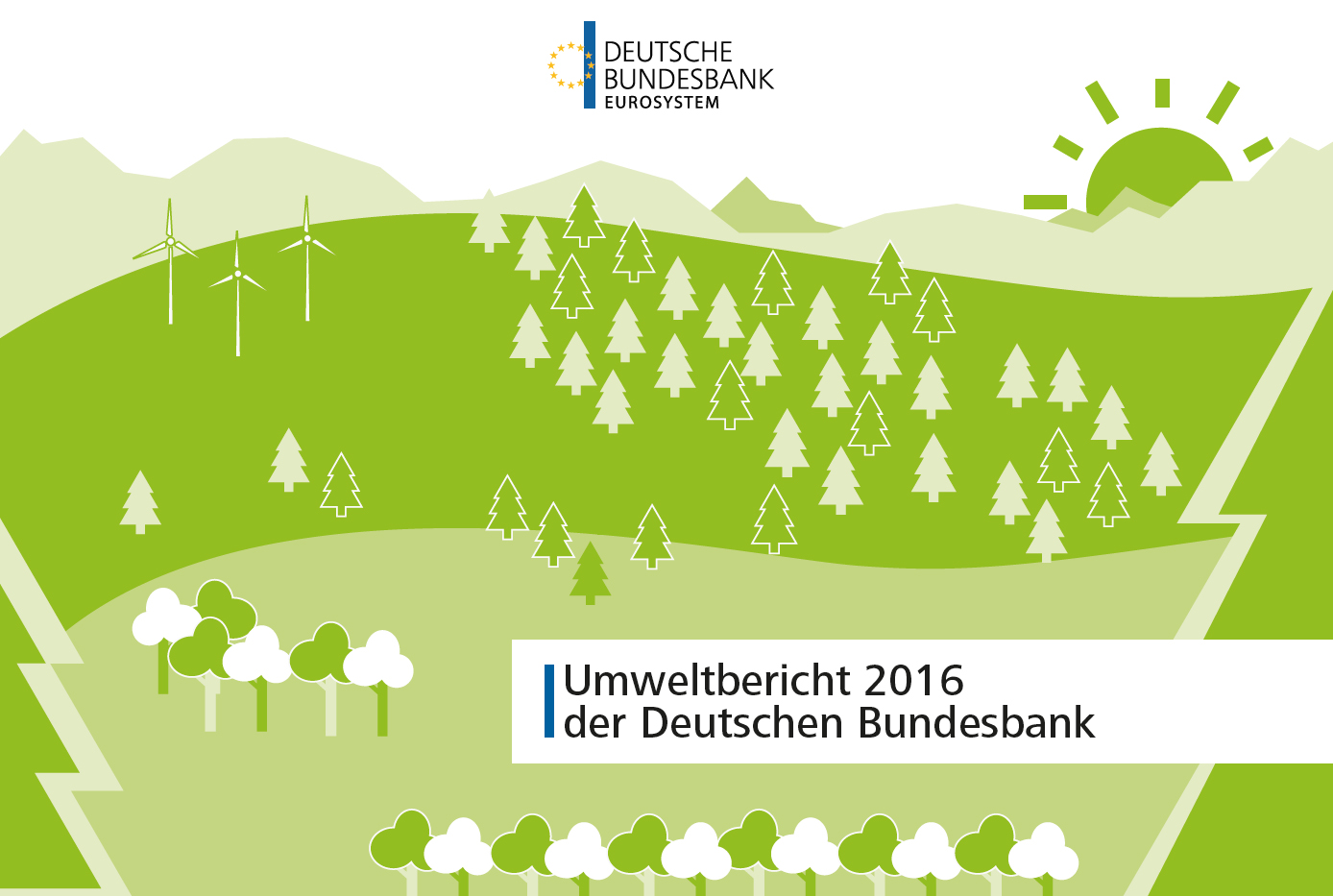
Environmental Report 2016: Bundesbank is on the right track
In 2016, the Bundesbank once again reduced its electricity consumption compared with the previous year. That is the verdict of its recently published Environmental Report 2016. On the whole, the Bank has already managed to reduce its electricity consumption by eight per cent compared with the average of the years 2013 and 2014, with this figure now serving as a base value for the Bank. Moreover, by the end of 2016, the Bundesbank was drawing the bulk of its electricity from renewable energy sources. Since the beginning of this year, the Bank has been using 100% green electricity, with all of its active office buildings now obtaining power from sources of renewable energy.
The Bundesbank's aim is to reduce its greenhouse gas emissions by 25 per cent by 2025. On the path towards reaching its stated objective, the Bank is seeking to achieve a ten per cent decline on its base value by 2020. "As the latest environmental report shows, we can be confident that we will achieve our goal,"
says Bundesbank Executive Board member Johannes Beermann. Measured in relation to the base value, the Bundesbank was able to cut its greenhouse gas emissions by 3.4 per cent in 2016. With the complete changeover to electricity from renewable sources, it is expected that the Bank's greenhouse gas emissions will drop further in future.
Further decline in paper consumption
As the latest environmental report shows, paper consumption at the Bundesbank continued to decline in 2016. Order volumes were already down by 12.5 per cent on the base value. In 2016, 293 tonnes or around 58.8 million sheets of paper were procured Bank-wide. The desired share of recycled paper used has remained constant at 95 per cent. "These are pleasing developments,"
says Mr Beermann. According to the environmental report, the decline can be attributed, among other things, to the increasing digitalisation of work processes, such as the use of a document management system or mobile end-devices.
Furthermore, in the first quarter of 2017, the Bundesbank analysed for the first time the impact that the commuter behaviour of its employees has on the environment. The initial results are presented in the Environmental Report 2016. "Even though the choice of transport is the responsibility of each individual staff member, we would still like to learn about the commuter flows to the Bundesbank. The results can help us to raise awareness about opting for an environmentally friendly way of getting to work,"
Mr Beermann says. After all, greenhouse gas emissions from commuting account for around 81 per cent of the total greenhouse gas emissions resulting from the Bank's business operations.
Consumption to be reduced further
According to the environmental report, the Bundesbank will continue to make conscious use of its available resources, reduce its consumption and make even greater use of renewable energies, public transport and e-mobility. New projects, in particular, will meet high environmental standards, the report states.